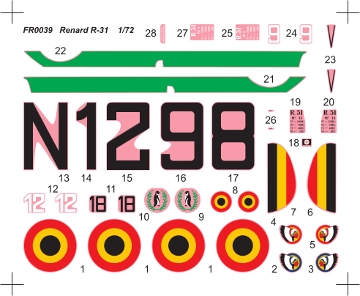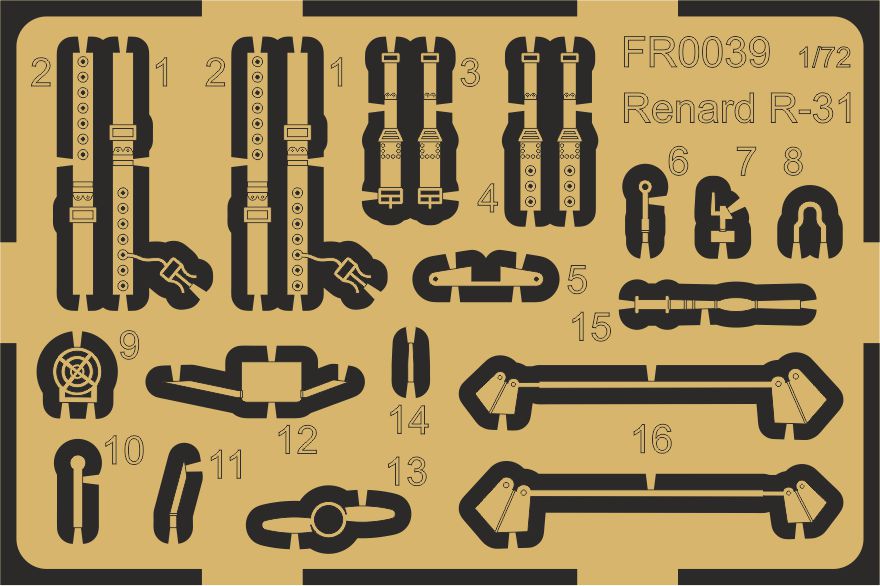FR0039 Renard R-31 Belgium
History:
The Renard R-31 was a reconnaissance type, and the only Belgian designed aircraft used by the Aéronautique Militaire in combat missions during the German invasion of 1940, although two other Belgian designs, the Stampe SV-4 and SV-5 were used in the non-combat training and liaison roles.
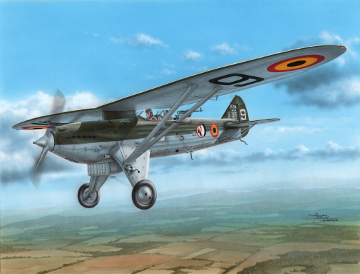
Alfred Renard designed the R-31 in 1931. The Rolls-Royce Kestrel powered prototype first flew on 16 October 1932, piloted by Charles Rooms, and flying tests began in November. A second prototype fitted with a Lorraine Pétrel engine proved unsuccessful in testing. An initial order of 28 aircraft was placed in March 1932. The standard production aircraft differed slightly from the prototype with a dihedral wing of 2 degrees and an improved oil tank. Production started in 1934, and a further six were ordered in August 1935.
At least one airframe, N21, was fitted with a hook under the fuselage to retrieve message pouches from the ground. Two more, N2 & N18, were modified as trainers for use by the Wewelgem flight-school, although they probably reverted to the standard configuration later on. N10 and another unidentified airframe were modified and designated R-32. They had more powerful Gnome et Rhône and Hispano-Suiza engines to improve high-altitude performance, and were fitted with an enclosed cockpit. Trials resulted in the Hispano-Suiza variant catching fire and N10 being returned to R-31 standard, as the R-32 was not put into production.
The R-31 served with the 9th escadrille “Blue Sioux” and 11th escadrille “Red Sioux”, in May 1940 based in Bierset, Liège, with 11 and 10 aircraft each respectively. The “Blue Sioux” moved to Duras on May 10th 1940, then to Steenokkerzeel, and between the 13th and 17th constantly relocating to Grimbergen, Hemiksem, Nieuwkerken-Waas, and Zwevezeele. Finally, on May 26th at Lombarsijde, two aircraft were lost on landing, and when Belgium surrendered on May 28th the remaining four R-31s still in flying condition were sabotaged by their crews. The “Red Sioux” left Bierset for Hannut on May 10th, then relocated to Hingene and Peutie on the 11th, Ursel on the 16th, Zwevezeele on the 20th, and finally to Stene, Ostende by the 26th. Two days later Belgian troops sabotaged the five surviving R-31s following the nation’s surrender. The 9th and 11th escadrilles completed 26 and 23 operational missions respectively in support of the Allied armies.
Whilst no Renard R-31 survived the May 1940 campaign, construction of a replica aircraft commenced in 2018 using original Renard plans.
Specifications: parasol single-engine observation aircraft of metal construction. Engine: Rolls-Royce Kestrel developing 487hp. Wingspan 14,4m, length 9,25m, wing area 32m2. Maximum Speed: 300kmh. Ceiling 9,300m, range 950km. Weapons: one fixed Browning machine-gun in fuselage, one flexible for rear defence, four 10kg bombs under wings (not used operationally).
Special thanks to:
- IPMS Belgium
- Didier Waelkens and Alain Delannai
Documentation (in french):
- Icare n°74
- La saga du Renard R-31, André Henry de la Lindi and Alain Delannai, Mémoires de l'aviation belge
- Kit n°84 (IPMS Belgium magazine)
- Avions Hors Série n°18, l'Aéronautique Militaire Belge en mai-juin 1940, Peter Taghon, Lela Presse
Improvements :
- Badges of 9 ème and 11 ème escadrilles have been inverted in the color profiles (box art is correct). Badges of 9 ème escadrille "Blue Sioux", decals Nr 2 and 3, go on N12 (Cam A), those of 11 ème (decals Nr 4 and 5) on N9 (Cam B). The Sioux is always looking forward.
Camouflages:
- Cam A, R-31, N12, 9 ème escadrille, January to May 1940.
- Cam B, R-31, N9, personnal aircraft of Cne Paul Henry de la Lindi, commanding the 11 éme escadrille, January to May 1940.
- Cam C, R-31, N18, with dual controls, Wewelghem Flying School, 1936.
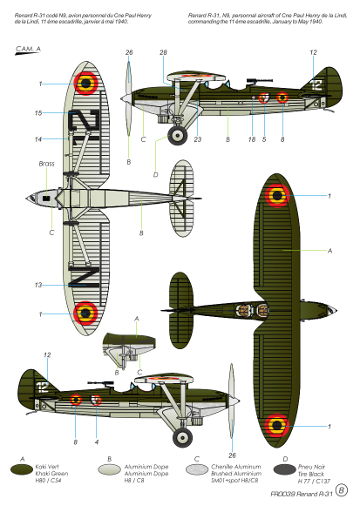
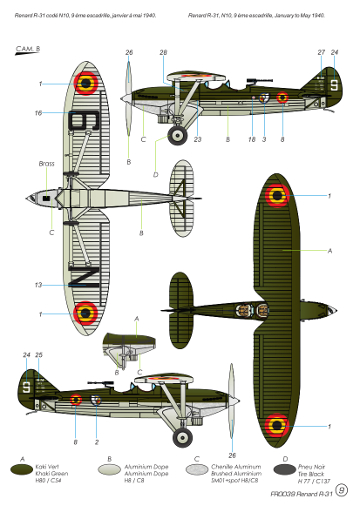
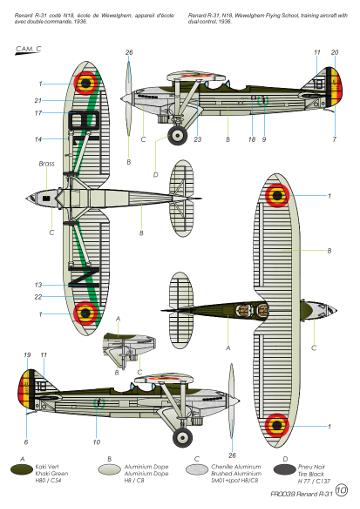
Sprues and 3D view:
- Pictures of test shots, first sprue and clear parts
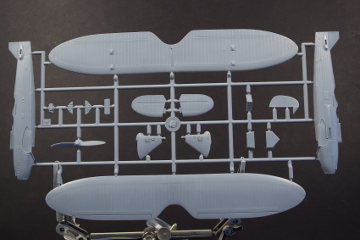
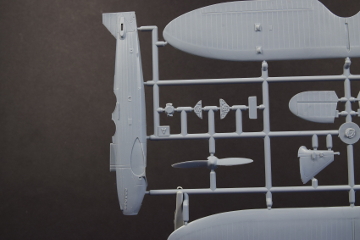
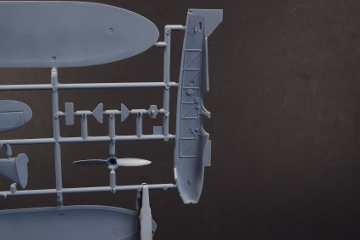
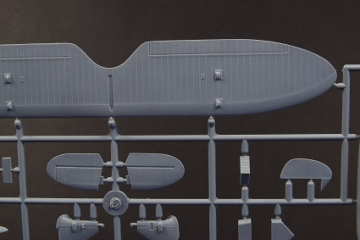
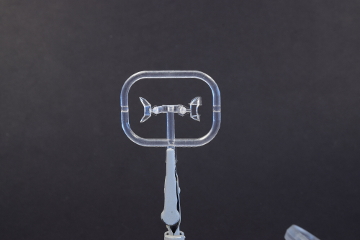
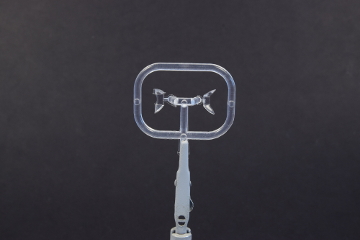
- Sprue B, test shot. The control column will be improved.
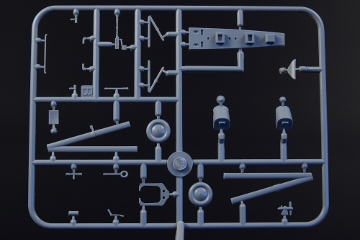
- 3D view of fuselage (training plane)
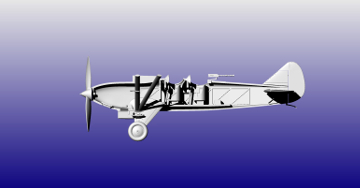
- Decals and PE (modified):
